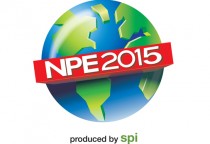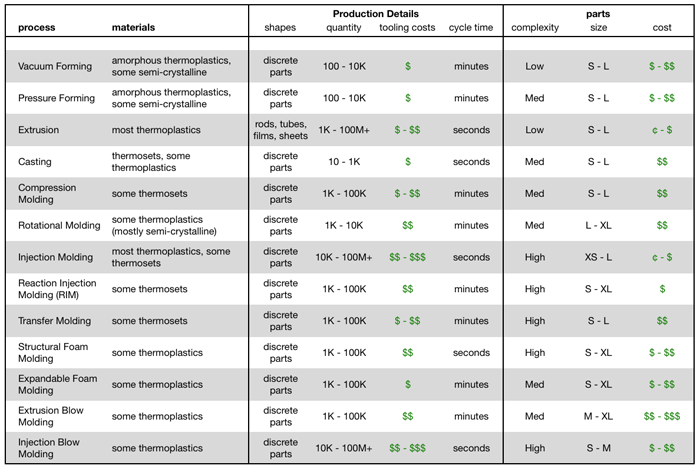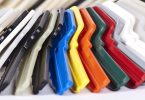 In March of 2015, I attended the National Plastics Expo in Orlando, Florida. Produced by the trade association SPI (Society of Plastics Industry), NPE is one of the world’s largest trade shows for the plastics industry. It is a huge show – so large it can be overwhelming.
In March of 2015, I attended the National Plastics Expo in Orlando, Florida. Produced by the trade association SPI (Society of Plastics Industry), NPE is one of the world’s largest trade shows for the plastics industry. It is a huge show – so large it can be overwhelming.
There were over 65,000 attendees, and more than than 2,000 exhibitors occupying over a million square feet of exhibit space. The exhibitors covered every aspect of the supply chain, from resin suppliers to molders to recyclers to equipment vendors for every kind of plastic processing – and a lot of the equipment was in full operation on the show floor.
As a plastics guy, I am always interested in new materials, and in new applications of existing materials. As a design consultant, I am especially interested in learning about innovations that affect how we go about making things – whether that involves materials technology, processing technology, or the overall process of product development. I want to learn as much as I can, as fast as I can – so that I can help my clients as they go about making things. I want to help them make better things, and I want to help them make those things in a better way.
The Design Brief
As a design professional, I usually look at a project from a design perspective. I fully expect that every project I work will have a design brief, along with some basic design specifications. This design brief, and the design specifications, usually address the following questions:
What are we making?
What should it do? (and what should it NOT do?)
What material are we going to make it from?
What are the material requirements? (strength, stiffness, toughness, chemical exposure, etc)
What is the best material to use?
What is the primary justification for using this material? (cost, performance, feel)
Other damn good questions (DGQ’s)
The answer to these questions – and the questions that these answers generate – will drive the development process.
The Manufacturing Process
Most design projects fall into one of two categories. The first category is what I like to call the “fun” category. This category involves ideas, concepts, exploration. It is what some people call the “fuzzy front end” of product development. Like most of us, I love working on projects that fall in this category. These kind of design projects are fun – usually lots of fun.
The second category involves schedules, deliverables, and deadlines (usually lots of deadlines). It is what I call the “work” category. This category has an entirely different vibe from the “fun” category. While it can be rewarding and fulfilling, and oh so satisfying – especially when we get to thumb our noses at the naysayers and jackasses who said our ideas will never come to anything – this category always involves a lot of hard work.
When designing things made of plastics, much of the design activity will fall in this second category. Part of that effort will involve selecting an appropriate manufacturing process, what I often describe as “The process selection process.” This process usually address the following questions:
How are we going to make these things?
What kind of parts are they?
What is their size? complexity? level of precision?
What are the performance requirements?
Mechanical, electrical, environmental, dimensional?
Color, appearance, feel?
How many are we going to make?
Near term? Long term?
How many per day / week / month / year?
How much do we want to spend?
Per part / assembly?
What is the tooling budget?
The answer to these questions should guide the development team to an appropriate manufacturing process. In the chart shown below, some general answers are given for some of the more commonly used plastic processing technologies:
 click on the table to open a full screen view in a new browser window
click on the table to open a full screen view in a new browser window
Insights from NPE 2015
One of the great things about trade shows is that they bring everybody in the industry together, at the same place, at the same time, and we get a chance to meet and talk. And while we may not always speak the same language, or have the same have interests, we can often learn from each other. During NPE 2015 I had the opportunity to interact with a broad cross section of plastics professionals. As a design professional, I often think that design drives everything. At NPE 2015 I was humbled, and happy, to be reminded that design is a piece of a complex infrastructure.
I was also reminded that how you are going to make something is often just as important as what you are actually making.

Eric’s newest book, Thermoplastic Material Selection: A Practical Guide, was published in May of 2105 by Elsevier, and is available from Amazon. Elsevier is one of the world’s largest academic publishers. This article was originally posted on the Elsevier author site, and is re-printed here with the permission of the publisher.







Want to hear more from plastics guy?
Sign up for a monthly update of our latest posts.
You have Successfully Subscribed!